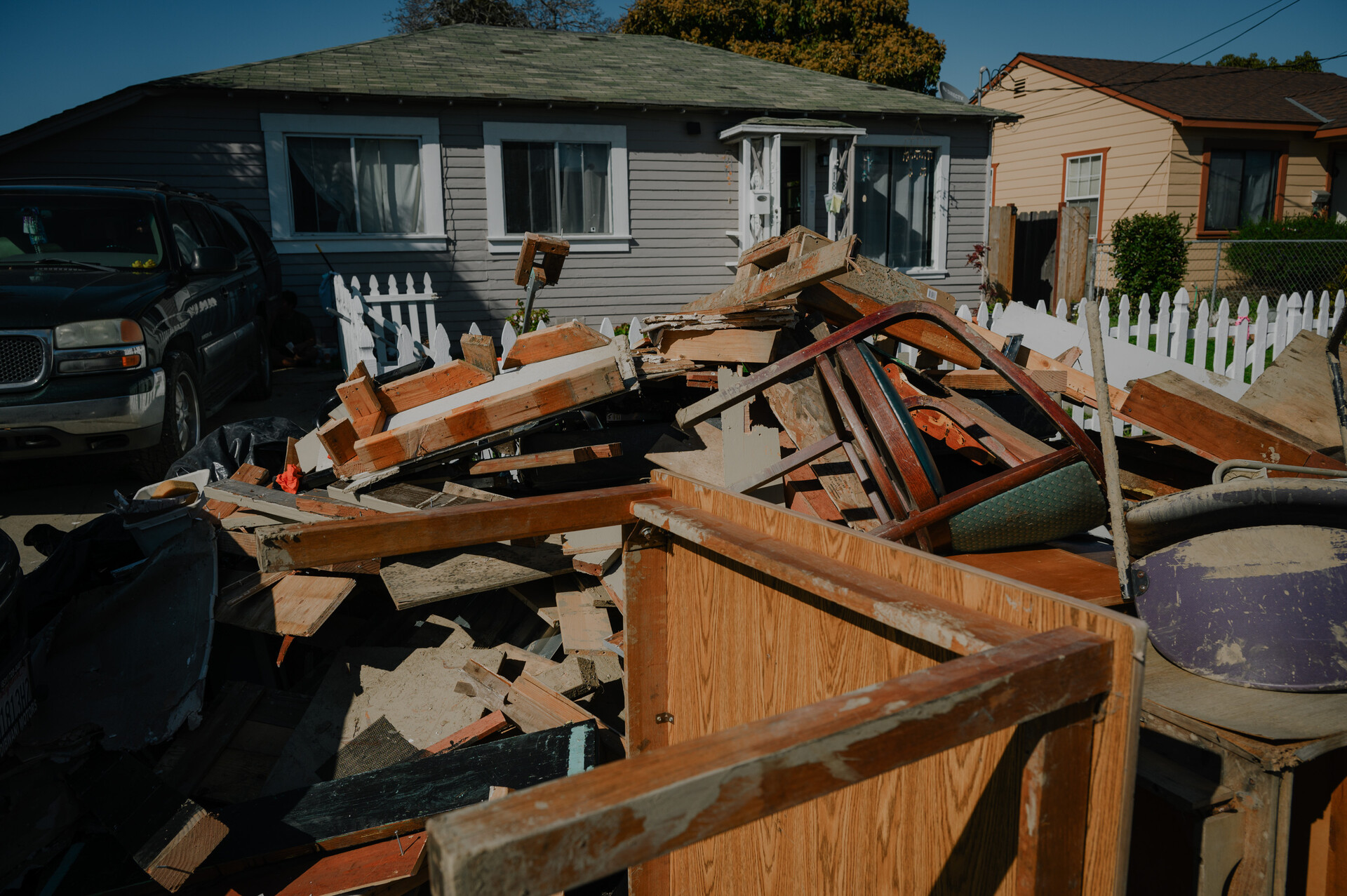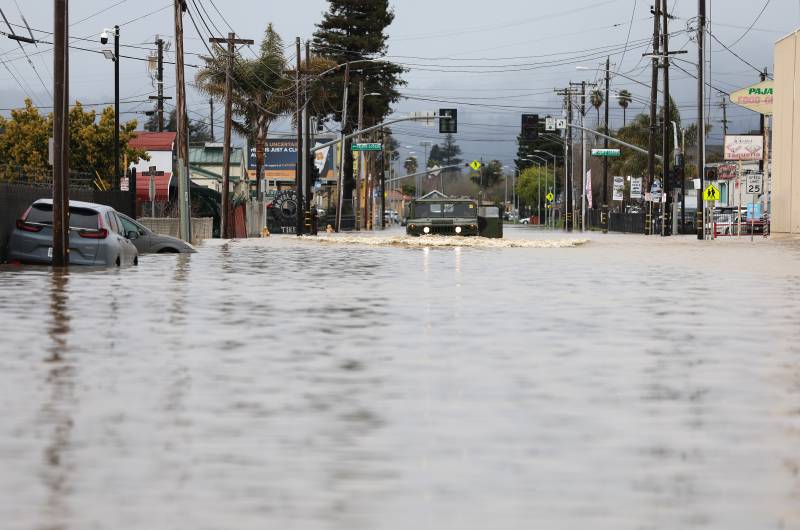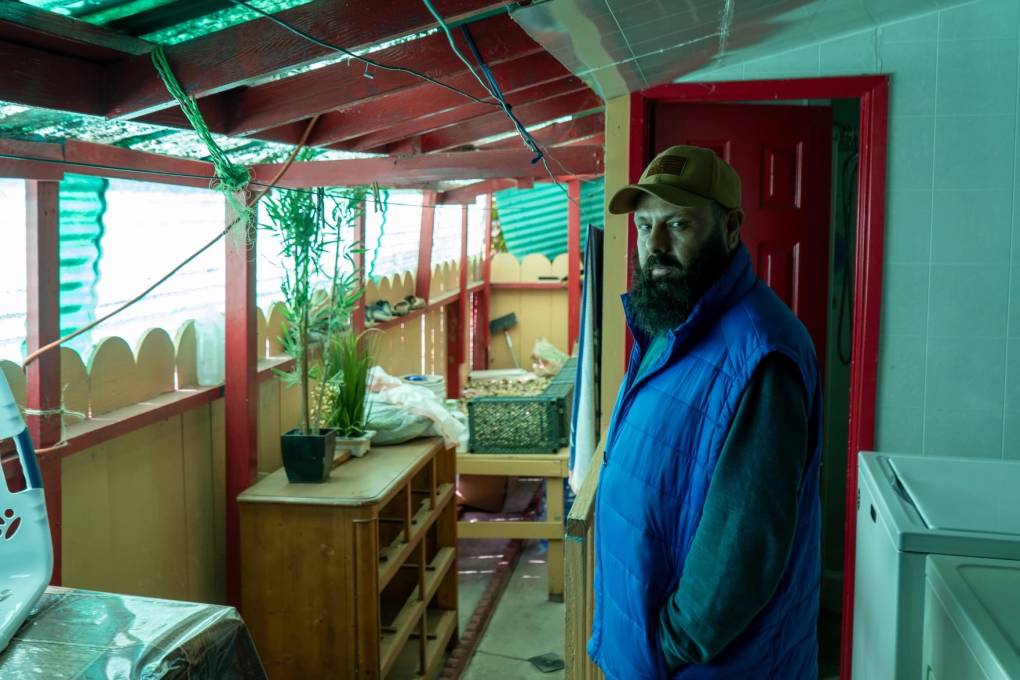This story was adapted from two separate articles originally published by KAZU.
This week marks six months since powerful storms overwhelmed the aging levee system and flooded the small farming community of Pajaro, just outside Watsonville, in Monterey County — forcing thousands to evacuate their homes.
Many of them still haven’t been able to return to their flood-damaged houses — and repairs both to the town and to the levees may not come in time for this winter’s rainy season.
“The house is not the same,” said Tomas Garcia. His family has owned their home in Pajaro since 1985. Now, it sits mostly empty of furniture. Its bare walls are in need of paint, and parts of the roof have been replaced with corrugated plastic. He and his family are staying with relatives just outside of town while they continue work on the repairs.
“We wish we could have finished this two or three months ago,” he said. “But everything has to do with funds.”
They recently replaced their floors, but now the work is stalled as Garcia waits on appeals to FEMA and his insurance company.
“I don’t feel safe yet until we finish all this,” he said. “We still need to do a lot of things.”
Like Garcia, much of Pajaro is struggling to return to normal. Main Street is busy again with traffic, businesses are open. But the middle school remains closed, as does the library. Cars covered in grime sit on the side of the road — abandoned since the flooding on March 10. Residents say the empty cars now serve as lingering reminders of the lives that are still upended.

Lost jobs and lost homes
For Michele Keith, the disaster has felt relentless.
“Nobody understands what we’re going through,” she said. Keith was living in her parents’ home when they were evacuated.
“My mom and dad lost everything on the lower half of the house,” she said. “They were there 25 years.”
For months, she stayed alongside dozens of other displaced Pajaro residents at a motel in Watsonville, paid for by Monterey County. But the program ended on Aug. 23.
“How am I supposed to work and be stressed out about a place to stay?” she said. “It’s just been so upsetting.”
A spokesperson for the county said the hotel program helped more than 200 people transition into permanent housing. But 60 residents, including Keith, were still living there when the program ended. They were offered another hotel option in Marina, about 25 minutes drive away, but nearly half opted not to make the move because of the distance.


